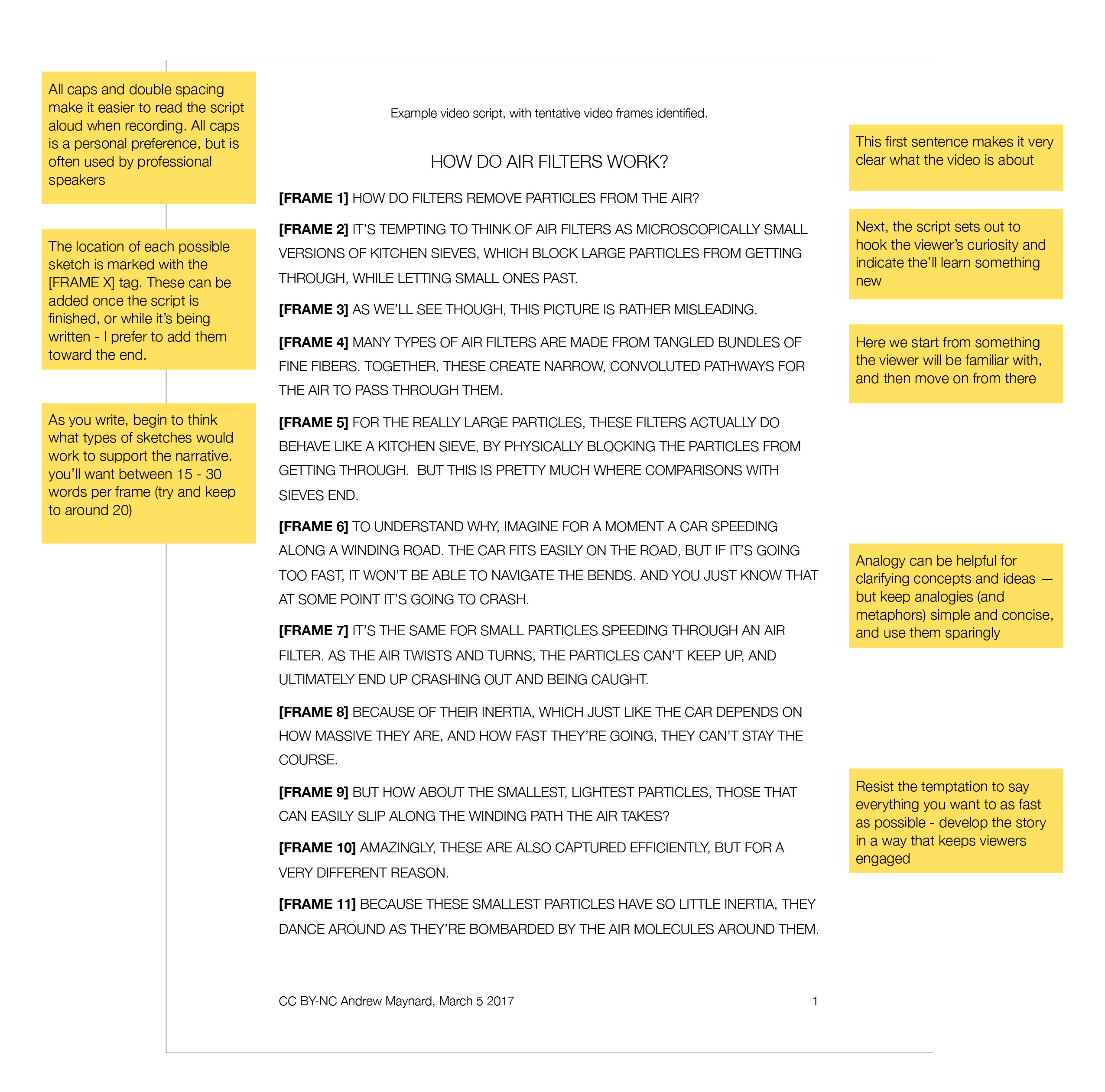SCIENCE VIDEOS MADE SIMPLE
A short guide to making simple whiteboard-style videos for scientists
3. SCRIPT
This guide was created in early 2017 to guide a bunch of graduate students through the process of creating simple science videos for general audiences using whiteboards, stick figures, and video capture devices like smartphones (we used Apple iPods, which are no longer available, but the techniques still stand).
Since then the available technologies have improved – for instance, most smart phones will record good audio without the help of an external microphone, and recording apps have evolved. But the basic approaches and principles remain the same. For a more in-depth article on the underlying ideas and process, see here.
Having a tight script is essential to creating an engaging video. This is one of the most important aspects of sketch-style video creation: Get it wrong, and your video will bomb.
Writing an effective script is an art in itself — it’s night and day different to writing a scientific paper, and different still to writing a popular article, or a blog post.
Scripts need to tell an engaging story in very few words. Assume you’ll have around 150 words per minute to play with (and you’ll be aiming for a video that’s ideally no longer than 3 minutes). These words need to make sense to someone who has no expertise in your area, and very little if any technical language. But they also need to make sense when strung together in sentences and paragraphs.
To keep things simple, use these guidelines:
Make sure you tell a story – your script should have a beginning, a middle and an end.
Write for a smart middle schooler (whoever your intended audience is). Whatever you do, don’t be patronizing — middle schoolers can spot this a mile off. But do use language, ideas and examples that are likely to make sense of someone this age.
Write as simply and as concisely as possible, without being too simple and too concise. It’s worth listening closely to the dialogue in the next movie you watch — unless it’s a Woody Allen movie, it’s amazing how few words screenwriters use to effectively convey stories.
Let viewers know what the video is about in the first few sentences, otherwise they’re likely to switch to another video. Remember: no-one has to watch your video — it’s up to you to persuade them it’s worth their time.
Kill your darlings — if an idea or a section doesn’t fit into the video, get rid of it (even if you love it!) Rather, write for your audience — don’t try to be clever or show how much you know, but write to inform, engage and entertain them.
Read your script aloud (many times) and edit it so that it sounds natural with you reading it. Read it to someone else to make sure it makes sense.
If you can’t fit your script into ~300 words or so, narrow the focus of your video and story down. Do not be tempted to compress your language as you would when writing an abstract —the results will sound awful when you read them aloud!
Example Script
Below is an annotated copy of the script used for the How Filters Work video. At 372 words long, this is just on the edge of being as long as you want to go with a short video script.


Next …
Modules:
Back to the OVERVIEW
